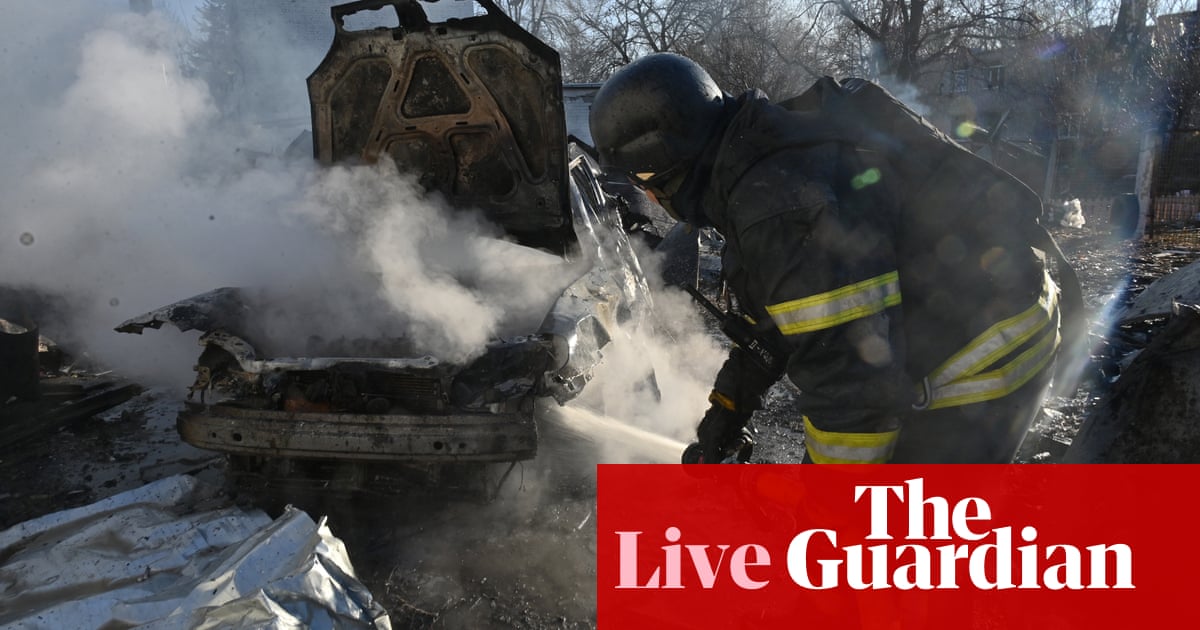Heat deaths in Europe may triple by end of the century, study finds

Heat deaths in Europe could triple by the end of the century, with the numbers rising disproportionately in southern European countries such as Italy, Greece and Spain, a study has found.
Cold kills more people than heat in Europe, and some have argued that climate change will benefit society by reducing those deaths. But the study, published in the Lancet Public Health, found that the death toll would respond slowly to warming weather and may even rise through people growing older and more vulnerable to dangerous temperatures.
If global heating reaches a catastrophic 3C or 4C, the researchers concluded, the rise in heat deaths will greatly outstrip the fall in cold deaths.
The researchers said the results suggested climate change could pose “unprecedented challenges” to public health systems, particularly during heatwaves.
“Many more heat-related deaths are expected to occur as the climate warms and populations age, while deaths from cold decline only slightly,” said David García-León from the Joint Research Centre at the European Commission, a co-author of the study.
Deaths from warm weather could kill 129,000 people a year if temperatures rise to 3C above preindustrial levels. Today, heat-related deaths in Europe stand at 44,000. But the yearly death toll from cold and heat in Europe may rise from 407,000 people today to 450,000 in 2100 even if world leaders meet their global warming target of 1.5C, the study found.
The research comes on the back of a series of scorching heatwaves that have wreaked havoc across the continent. Its results challenge arguments from climate deniers that global heating is good for society because fewer people will die from cold.
Even in Europe, the coolest inhabited continent, the lives lost to stronger heat will offset those saved by milder cold, the study found. Countries across Asia, Africa, Oceania and the Americas are baking in even deadlier temperatures.
“This research is a stark reminder of the number of lives that we are putting at risk if we fail to act quickly enough against climate change,” said Madeleine Thomson, the head of climate impacts and adaptation at the health research charity Wellcome, who was not involved in the study.
The predicted tripling of direct heat deaths in Europe was “not even the full picture,” she added, pointing to research that links extreme heat to miscarriages and worse mental health. “And then there are the indirect impacts. We have already seen how extreme heat events can cause crop failure, wildfire devastation, damage critical infrastructure and hit the economy – all of which will have knock-on effects on our lives.”
The researchers modelled data on 854 cities to estimate deaths from hot and cold temperatures across the continent. They found that heat would kill more people in all parts of Europe but that the heaviest burden would fall on southern European countries such as Spain, Italy and Greece, as well as parts of France.
They projected the death toll from uncomfortable temperatures would rise by 13.5% if the planet heats 3C – a level of climate breakdown slightly higher than policies are expected to cause – leading to 55,000 extra deaths. Most of those who die will be older than 85.
Gary Konstantinoudis, an epidemiologist from the MRC Centre for Environment and Health, who was not involved in the research, said the study was of high quality and provided valuable insights, but cautioned that predicting temperature-related deaths was complex and would always contain uncertainty.
after newsletter promotion
The analysis was based on a previous study that assumed the effect of temperature on death rates was constant between 2000 and 2019, he said, but other studies have reported a decrease because of factors such as improved healthcare and changes to infrastructure. “Not accounting for this is expected to overestimate the future impact of heat on mortality,” he said.
The study also extrapolated heat mortality data from cities to rural regions, which face less heat stress.
Elisa Gallo, an environmental epidemiologist at ISGlobal who has studied heat mortality in Europe, and who was not involved in the study, said it was “increasingly essential” to adapt to rising heat.
The researchers encouraged governments to consider policies to reduce death tolls, such as investing in hospitals, creating action plans and insulating buildings. They highlighted that the projected rise in deaths was driven by changes to Europe’s population structure and climate.
“If we want to avoid reaching the worst-case scenario, it is fundamental to tackle the root of the problem by addressing emissions of greenhouse gases,” said Gallo.
The researchers concluded that efforts to adapt should focus on regions with high unemployment, poverty, structural economic changes, emigration and ageing populations. They said such areas were less able to adapt to climate damages and also hit harder by the rise in heat deaths.
Related
Zelenskyy reiterates call for air truce after huge Russian attack…
We need Russia to stop attacks, Zelenskyy says, backing calls for truce in air, at seaUkrainian president Volodymyr Zelenskyy has responded to overnight attacks
Europe scrambles to rearm as Trump threatens security guarantees and…
CNN — European leaders have vowed to rearm the continent at historic emergency talks h
Russia launches ‘massive’ attack on Ukraine after Europe rushes to…
Ukraine's energy and gas infrastructure came "under massive missile and drone shelling" by Russia on Friday, a Ukrainian minister said."The energy and gas infra
American severance may be averted, but Europe’s leaders must fear…
With a mixture of regret, laced with incredulity, European leaders gathered in Brussels to marshal their forces for a power struggle not with Russia, but with t












